| Ā° J-PARC News - May 2014 (Issue #109) |
| In order to further improve safety awareness, without allowing memories to fade of the radioactive material leak accident which occurred last year at the Hadron Experimental Facility, J-PARC has decided to hold a Workshop for Fostering Safety Culture every year in May. On May 23, the first workshop was held at the auditrium of the Nuclear Science Research Institute (JAEA-Tokai) , and the event was broadcast via TV to auditoriums at the Tsukuba and Tokai campuses of the High Energy Accelerator Research Organization (KEK) . At the workshop, J-PARC members reported on progress in the year since the accident, the status of renovation work at the Hadron Experimental Facility, plans for the future, and other topics. In addition, the journalist Naoyuki Uchimura, a member of the External Expert Panel to review the accident, gave a safety talk entitled "Re-examining 'Research Facilities and Safety Culture'." |
 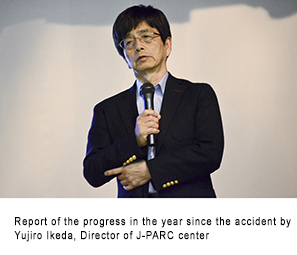 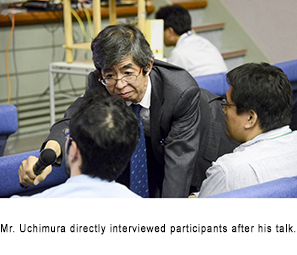 |
 * Click here to enlarge. * Click here to enlarge. * Click here to enlarge. * Click here to enlarge. |
| |
|
| ĀúOperation of Neutrino Experimental Facility Resumes |
| At the Neutrino Experimental Facility, tests to confirm the performance were started on May 16 and user operation was resumed on May 26. Before that, on the 22nd, an explanatory meeting prior to resumption of the neutrino experiment was held for the press at the Tokai campus of the High Energy Accelerator Research Organization (KEK) , and this was covered by 13 reporters from 12 companies. |
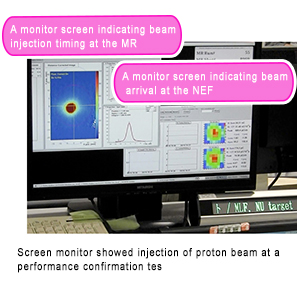 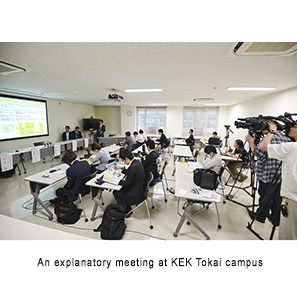 |
 * Click here to enlarge. * Click here to enlarge. * Click here to enlarge. * Click here to enlarge. |
| |
| Ā£to Page Top |
|
| ĀúTrends Moving Toward Construction of Transmutation Experimental Facility |
| As part of efforts to achieve transmutation of long-lived radionuclides using an accelerator-driven system (ADS) , a conference was held on May 19 at the Belgian Embassy (Tokyo) to promote international cooperation with the MYRRHA Project for an ADS experimental reactor proposed by Belgium. There were forward-looking discussions on moving toward such cooperation. |
| |
| Ā£to Page Top |
| Complementary use of x-rays and neutrons leads to the world first elucidation of "the Overall Electronic Excitations of a High-Temperature Copper Oxide Superconductor" |
| The complementary application of synchrotron radiation and pulsed neutrons has revealed for the first time a full picture of the electronic excitations in electron-doped copper oxide superconductors. |
| In work recently published in Nature Communications, inelastic X-ray and neutron scattering were used to elucidate the spin and charge excitations in electron-doped copper oxide superconductors. The results combined to give a complete picture of the electronic excitations that are thought to be critical in understanding superconductivity, and proved that electrons acquire a highly itinerant character in the doped metallic state. |
| The neutron inelastic scattering experiments were performed at the Materials and Life Science Experimental Facility of J-PARC using the 4SEASONS spectrometer (BL01) and with the support of beamline staff from J-PARC and CROSS-Tokai. (Press release on April 26) |
|
| Oxide-ion conductors are used in applications such as fuel cells, gas sensors and electronic materials. Recently a research group made up of members from the Tokyo Institute of Technology, Ibaraki University and ANSTO (Australia Nuclear Science and Technology Organisation) discovered the conductive material mentioned in the title, a new structure family of NdBaInOH4 (neodymium barium indium oxide) . This group elucidated the new material's crystal structure and oxide-ion diffusion pathway using neutrons and synchrotron radiation. The neutron experiments were carried out using BL20 : iMATERIA of the MLF and the instruments of ANSTO. (May 7 press release) |
 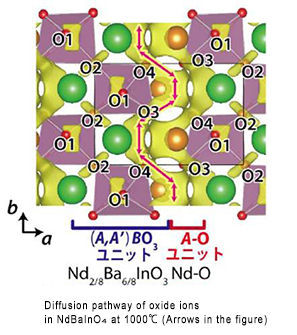 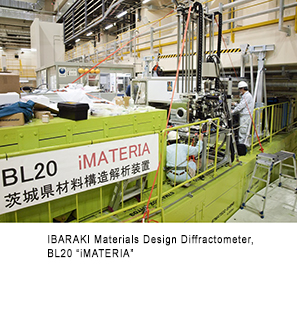
 * Click here to enlarge. * Click here to enlarge. * Click here to enlarge. * Click here to enlarge. |
| |
| Ā£to Page Top |
|
| ĀúFacility Updates |
| (1) Accelerators |
| At the Linac, performance testing of the ion source and Radio Frequency Quadruple Linac (RFQ) was carried out using a test stand newly fabricated to augment beam current. In April, continuous operation mode was tested for 30 hours, and it was confirmed that the system achieves long-term stable operation. The plan calls for these devices to be installed in the beamline during summer maintenance. At the 50 GeV synchrotron (MR) , tests to check performance were conducted starting on April 28. In addition, a performance check was conducted on the high-sensitivity 2D beam profile monitor which was installed in the beam transport line (3-50BT) to the MR while operation was suspended, and which enables precise observation of the beam core and halo. |
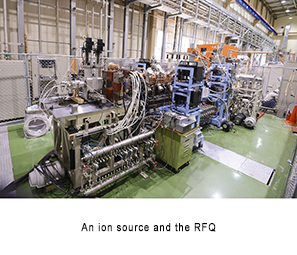 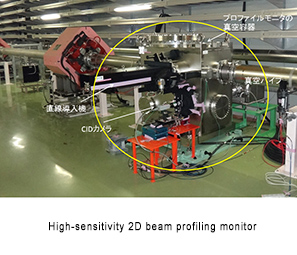 |
 * Click here to enlarge. * Click here to enlarge. * Click here to enlarge. * Click here to enlarge. |
| |
| (2) Experimental Facilities |
| At the Materials and Life Science Experimental Facility (MLF) , a muon experimental instrument to be installed in Experimental Hall #1 (up to the S1 area of the S line) is currently under construction. In Experimental Hall #2, a new spectrometer was installed in the D area of the muon beam D line. In terms of neutron experiment instruments, for the three newly installed neutron beam lines-BL06 ( neutron resonance spin echo spectrometer), BL22 (neutron imaging system) and BL23 (polarization analysis neutron spectrometer) - facilities were inspected on April 22 regarding radiation shielding performance and related characteristics by relevant authorities and passed inspection. At BL06, the various tests necessary for beam acceptance were carried out, including inspection of the safety interlock function. At BL11 (high-pressure neutron diffractometer) , a neutron diffraction experiment under extremely high-pressure and high-temperature conditions (15 GPa, 1100℃) was succeeded. In addition, various tasks for development of a neutron detector were carried out such as prototyping of the neutron focusing super mirror which is a control device for the neutron beam (BL17, for inclined injection and small angle scattering) . Tasks carried out at the Neutrino Experimental Facility include powered testing after replacement of magnetic horns in the Target Station Building, and installation, restoration and airtightness treatment of the target station shield body. Trial operation and safety checks were carried out for equipment and devices for which experiments had been stopped for about one year. |
| |
| At the Hadron Experimental Facility, ventilation equipment with filters was finished in the experimental hall. On April 22, a performance check (inspection support) of ventilation equipment was carried out by the Nuclear Safety Technology Center, an inspection organization of the Japanese government. Renovation work such as improving the airtightness of the primary beam line is progressing with an eye toward completion around fall of this year. |
|
©2014 J-PARC Center. All rights reserved.
|
|
|